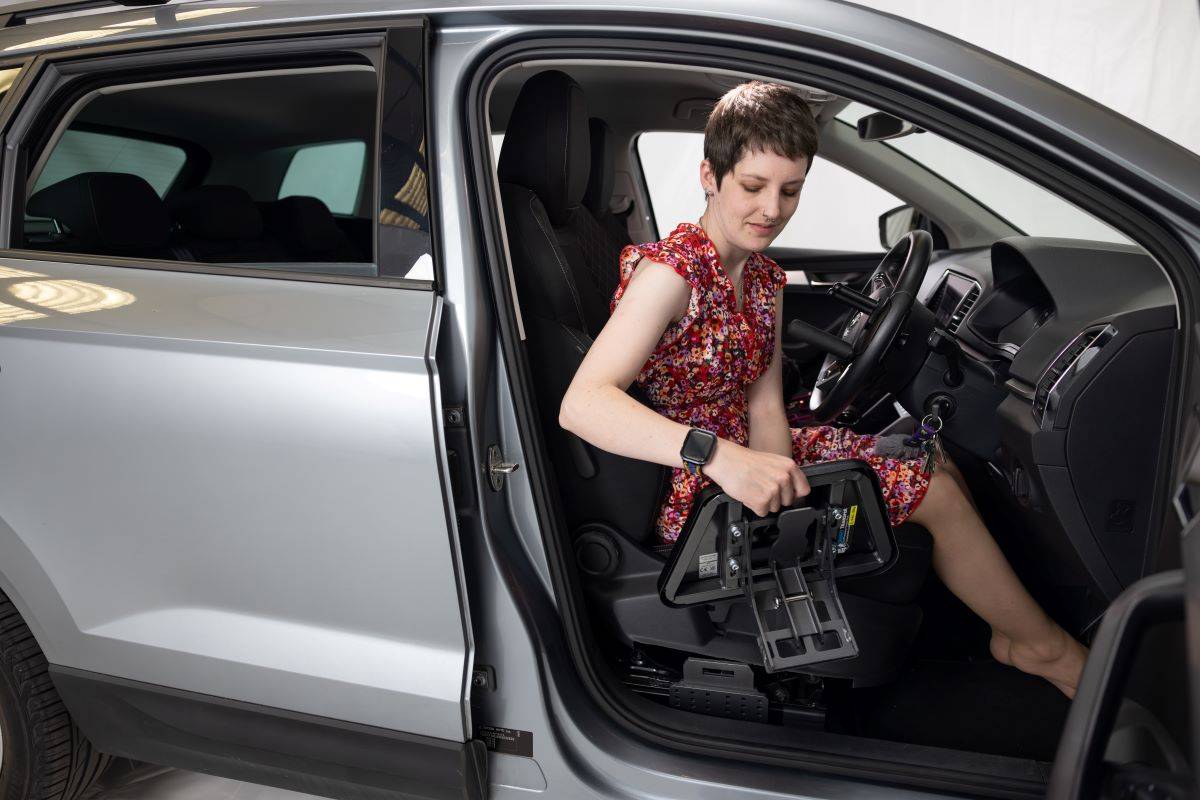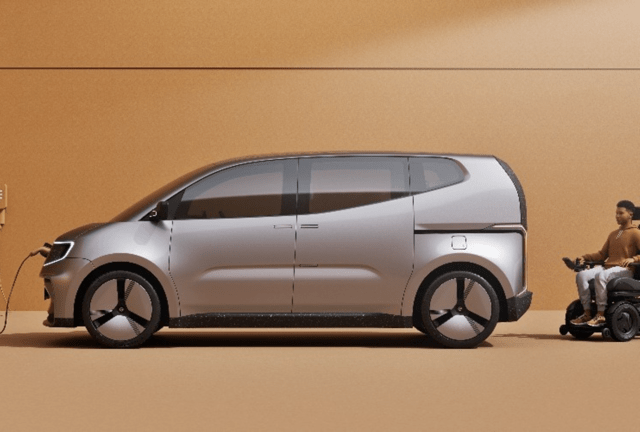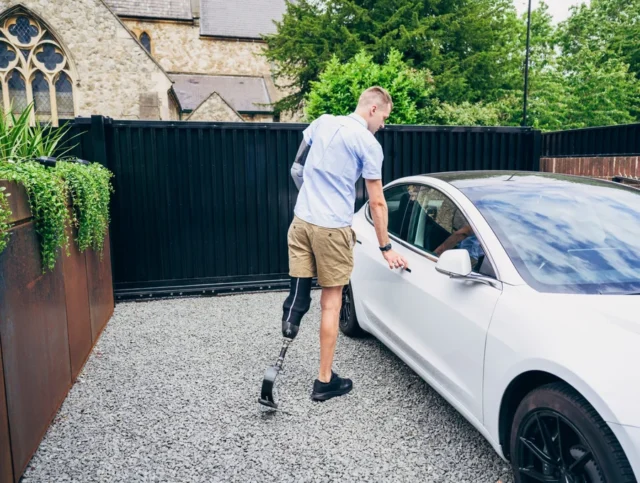Proactive Engagement Is Needed To Avoid Huge Ethical Challenges Facing Mobility Industry
The next few months are a crucial time for the Mobility industry.
Right now, the landscape of mobility solutions is complex. It’s ever-evolving, with several different bodies and organisations fighting for what it should look like and what should come out when the UNECE Cyber Security (UN R 155) and UNECE Software Updating (UN R 156) regulations become mandatory in July 2024.
While this upcoming regulation is a small piece in the bigger picture, the reality is that, as it stands, 1.3 billion disabled people around the world could find themselves in a position where access to the Mobility solutions that currently exist and enable them to retain their independence could be heavily impacted.
The bigger piece of that puzzle is that these regulations are being driven by a huge shift towards an autonomous future, one in which vehicles are far more sophisticated. It’s rapidly evolving, especially when you also throw electric vehicles into that mix.
But that intersection of technology, regulation, and human needs is creating a delicate balance that needs addressing quickly.
Below, Matthew Walker and Martin Peaker, Managing Director and Group Engineering Manager at ABC Mobility Group, owner of Mobility in Motion, give an update on the latest conversations taking place on a global level and how they and two key industry bodies are lobbying to ensure disabled people have their voices heard.
Navigating new global regulations
To understand what is happening, we need to go right to the very beginning and bring context to this conversation.
As a manufacturer and distributor of vehicle adaptations for people with disabilities and reduced mobility, there are a lot of regulations that need to be adhered to, volume-thick regulations that ultimately decide what can and cannot be done with different products. Cars go through the same processes before they can hit the road.
Our journey begins with the labyrinth of type approval regulations governing every aspect of vehicle safety, from crash tests to minute technical specifications. But our challenge doesn’t end there; it merely leads into a myriad of regulatory realms.
The Road Use and Constructions Act in the UK delineates the legal framework post-vehicle registration. Additionally, our adaptations often fall under broader European or UK directives – such as the machinery directive – imposing stringent safety standards on our lifting devices, like a boot hoist, and other adaptations classified as machinery. Other adaptations also need to adhere to the substantial Medical Device Regulation – all in a mission to ensure the products we supply are safe.
However, the mobility industry treads a fine line between regulatory compliance and innovation. The upcoming wave of regulations aimed at facilitating the shift towards autonomous vehicles poses a monumental challenge. Set for enforcement around 2024, these upcoming regulations encompass the vehicle’s autonomous operations, sensing systems, and cybersecurity.
Speaking at a top level, these cybersecurity regulations, particularly the UNECE R 155 and R 156, will define the requirements for the protection of vehicles against cyber attacks and the implementation of a Cyber Security Management System (CSMS). They are being implemented with safety at its heart. No question. It’s there to ensure vehicles do not get hacked and the driver, inadvertently, loses control of the vehicle they are behind, through no fault of their own.
However, while essential, these safety upgrades pose compatibility challenges for driving adaptations designed for individuals unable to use traditional pedals. Lane-keeping assistance and driver drowsiness awareness systems, while improving vehicle safety for fully able-bodied drivers, may require turning off for a disabled driver thus denying them the safety benefit.
We are aware this regulation is coming and the adaptation industry has a working body with representatives in Brussels to try and affect this regulation and fight for inclusivity. It’s just really difficult to do so because there are so many stakeholders involved in that conversation.
For instance, you’ve got all the vehicle OEMs (Original Equipment Manufacturers) and then you’ve got all the specialist manufacturers. The adaptations industry is a relatively small voice within that and to get heard is very difficult. That’s one challenge.
The second is that the automotive manufacturers don’t talk to us at all about their new technology.
We have an ethical responsibility to find an answer
One of the central conundrums we face is the lack of information exchange and collaboration between automotive OEMs and adaptation manufacturers.
The adaptation industry often has no idea how a manufacturer has interpreted a specific regulation, how they have intended to make their vehicles comply, and what technology is required to do that.
And so often the first time an adaptation business knows about it is when it receives a car through the door for an adaptation kit design and we discover that there is new technology or a barrier to fitting the required kit. The different variations of vehicles only add to that complexity.
A good example of how things are changing is the move to electric and hybrid vehicles. So what happens is that where there were previously two car models, say a Ford Mondeo petrol and a diesel version, there is now an electric battery version, there is a hybrid version, there might be a plug-in hybrid version, and so on and so on.
Access to technical data from the OEMs is imperative to the future of the vehicle adaptation sector. Often, we are blindsided by unanticipated technological barriers when retrofitting vehicles, leaving the industry in a constant reactive state and hindering our quest for inclusivity.
The lack of communication with the vehicle manufacturers forces the adaptation industry to repeat engineering activities causing delays in adapted vehicle availability and an unnecessary cost, ultimately paid by the disabled driver. This is surely discrimination.
Our industry attempts to navigate these challenges through industry representation in Brussels, primarily through the European Mobility Group (EMG) and the Association of Vehicle Adaptation Manufacturers (AVAM). However, the sheer complexity and scale of stakeholder involvement often dilute our voices, leaving us reactive and at times, struggling to ensure freedom of mobility for those who need it most.
The road ahead necessitates a more cohesive partnership between adaptation manufacturers and OEMs. Access to technical data and shared approval processes can pave the way for collaborative innovation, mirroring practices in other vehicle customisation sectors.

How is the future of EV factoring into this conversation
The Motability Scheme ran a significant report that looked into the impact – both positive and negative – would have on the sector and disabled drivers.
While there are undoubtedly huge benefits in making the switch to EVs in the future, particularly around carbon emissions, there is still a significant challenge to overcome. Again, the biggest centres on the technology. New vehicle technologies like electronic controls and autonomous features often don’t consider disabled users’ unique needs, causing issues with adaptations.
And right now, there is a lack of support and advice on EVs tailored for disabled users. This, itself, is a huge area of opportunity if we are to begin building consumer knowledge and confidence in switching to electric.
But as the Motability scheme rightly calls out, vehicle manufacturers need to engage with disabled users early in the design process to embed inclusive and accessible principles, while guidelines on accessible EV design should be developed collaboratively by industry stakeholders.
What’s next and what can be done about it
As alluded to, the EMG has effectively a seat in the mobility industry representation in Brussels. So it can help in that way, in that it can try and impact regulation. And it’s had a limited effect there in that, for instance, there are some safety systems which would prevent you using hand controls, for example, for driving, and you can turn those off. That’s not what we want, because, of course, you are then denying the disabled driver the opportunity to have that safety feature
Whilst it’s a poor compromise, we feel AVAM is slightly different in that it represents just the UK manufacturers. It’s at a more embryonic stage, let’s say, than the European Mobility Group. But it is currently trying to put together a standard on how those companies will operate.
This is an industry-standard which you will have to meet to join the organisation. So it controls things like the way you operate your quality control, your product engineering, and validating the product, but also specifics about what criteria certain types of adaptations need to meet as well.
Leveraging the influence of organisations like the European Disability Forum holds the potential to advocate for regulatory reforms, ensuring regulations protect and empower disabled individuals without impeding their mobility rights.
Unsolved, these constraints infringe upon the basic rights of disabled individuals to access mobility, posing ethical dilemmas that demand urgent attention. The rate of regulatory introduction and vehicle technological change is increasing, and we are already seeing technology introductions such as Cybersecurity that will effectively prevent adaptations from working and therefore deny mobility to the disabled. All the stakeholders including the regulators, vehicle manufacturers and adaptation manufacturers must come together now.
The challenges facing the Mobility industry are, indeed, significant, but not insurmountable. Through collaboration, understanding, and a shared commitment to ethical responsibility, the industry can pave the way for a future where mobility is truly inclusive and accessible for all.
The time for proactive engagement is now, and by coming together, we can navigate these challenges and build a future where nobody is left behind.
About Mobility in Motion
Mobility in Motion is an innovative venture within the ABC Mobility Group, committed to expanding the horizons of mobility solutions for people with disabilities. With over 40 years of collective industry experience, our team is driven by a passion for enabling independence and accessibility, ensuring that no individual is left behind in their pursuit of freedom on the road. Find out more about the business here.
About Matthew Walker
Matthew Walker’s lifelong journey into the realm of accessibility solutions began with a remarkable inspiration – his father, David Walker, the visionary founder of the esteemed Autochair company. Since 2005, Matthew has been steering the course of the ABC Mobility Group as its Managing Director, bringing his exceptional leadership and innovative mindset to the forefront of the company’s operations. Under his guidance, the ABC Mobility Group has flourished to become a UK leader in the manufacture and supply of transformative accessibility solutions.
About Martin Peaker
Martin Peaker is the Group Engineering Manager at Mobility in Motion and is renowned for pioneering product development in diverse Automotive and Machinery sectors globally. With a career steeped in innovation, he showcases unparalleled expertise in total engineering oversight, R&D leadership, and effective project management. His track record includes spearheading ground-breaking NPI projects, generating £2 billion in sales, and conceptualising 20 patents for product and engineering advancements. Martin has worked with international teams across Europe, Asia, and the Americas, steering the delivery of record-breaking new vehicle models and chairing the University of Cambridge Vehicle Dynamics Consortium for half a decade.

Accessible travel
The Best Cars Currently Available On The Motability Scheme
The Motability Scheme is fantastic for disabled people, providing them with the opportunity to lease a brand-new car using their qualifying Mobility Allowance. With so many…

Accessible travel
The Future of Electric WAVs: Overcoming Challenges & Embracing Accessibility
Discover the challenges of Electric Wheelchair Accessible Vehicles (eWAVs) and how our innovative adaptations are paving the way for accessible EVs today. Explore our insights into…

Driving with adaptations
Cost-Effective and Reliable Driving Aids for Amputees: Our Recommendations
Life after limb loss and amputation doesn’t have to mean the end of driving. Although it can affect your mobility and driving ability, there are a…